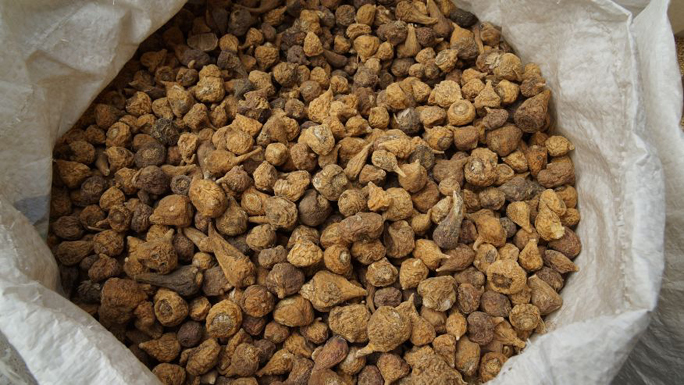
Photo by Chris Kilham
Maca, a nutritious and medicinal root cultivated in the Peruvian Andes, is currently the object of a trade fever, in which market prices have risen to stratospheric levels as a result of unprecedented demand. A staple food of the Andean people, maca has been cultivated for over 2000 years in the highlands of both Peru and Bolivia, and is consumed daily by the people of those areas. The plant grows only at very high altitude, and has steadily increased in popularity in the U.S. herbal market since its introduction here in the late 1990s. In more recent years, maca has gained growing market share in Europe and Asia as well. Touted as a super-food, maca sells as a powder for use in foods and blender drinks, and as a concentrated extract in herbal supplements.
In 1998 when I began to work with maca in the highlands of Peru at 15,000 feet altitude, the market price was around 4 Peruvian Soles ($1.50) per kilogram (Kg) of dried root. Over time, as published human clinical studies have shown maca to improve energy, endurance, and sex drive, market prices have climbed in a steady, organic manner. Last year, in 2013, the wholesale price for dried maca root hovered at 12 Soles ($4.25). But this year, as a result of a storm of factors, maca prices have shot up sharply, with no end in sight. This week’s wholesale price hovers around 39 Soles ($13.85) per Kg of dried root, and some growers have even been offered as much as 50 Soles ($17.75). This astronomical rise in cost has set the maca market on its ear, with speculators counting on the price to continue to soar.
This isn’t the first time that plants have been the subjects of market “fevers.” The most famous case was that of Tulip fever, or Tulip mania, in the 1630’s, in which common tulip bulbs rose in price until individual bulbs sold for as much as three times the annual wages of a skilled craftsmen. Fortunes were lost and sold during that period, which was followed by an inevitable market collapse. A more modest example occurred in the mid 1990’s, when within just one year the market price of kava, a tranquility-promoting South Pacific root, rose from approximately $4 per Kg dry, to as high as $22. The price has since settled down to a midway point.
Approximately a decade ago, attracted by maca’s highly nutritious composition and its legendary sex-enhancing powers, growers in China’s southwestern province of Yunnan began to cultivate the plant. How they obtained the seeds needed to initiate cultivation remains a mystery, and a concern to Peruvian agricultural authorities. Today, acreage of maca cultivated in Yunnan purportedly exceeds that of the Peruvian highlands, though specific acreage figures remain elusive.
As a result of Yunnan maca cultivation and aggressive promotion, popularity of maca in the immense Chinese market has risen sharply. Due to concerns about well-known high levels of industrial pollutants and heavy metals in Yunnan soil, numerous teams of Chinese buyers have located to the Peruvian highlands, to purchase more wholesome organic Peruvian maca for sale in China. The presence of the Chinese buyers, scouring the highlands toting sacks of cash, has contributed to what now has become a full-blown maca market fever, as those buyers have attempted to corner the market to satisfy demand for maca back home. Even this week, in the midst of the annual maca harvest, Chinese buyers have fanned out into the high altitude maca fields, tantalizing growers with offers of dazzling prices once the roots are dried.
Maca deserves popularity and widespread recognition, and has earned its position as a super-food. The root imparts a feeling of enhanced vigor, and is gaining a reputation for its benefits for the relief of uncomfortable symptoms of menopause, most notably hot flashes and night sweats. And like all sex-enhancers, maca’s reputation as a love aid is key to its sales gains. But the current maca fever, with prices escalating daily and market speculation rampant, has created an atmosphere of significant market instability. Growers are afraid to sell, aware that around the corner, prices could go even higher than today’s record levels.
The implications of the current maca market fever are two-fold. First of all, we can expect to see higher prices for maca products on store shelves. If the prices go too high, this could have a chilling effect on sales. Secondly, if history is a worthy guide, we will inevitably see a crash, or at least a settling down of prices. The current rapid rise of maca prices is not sustainable. And like the peaks of a great roller coaster, what goes up must come down.
Learn more about Maca

